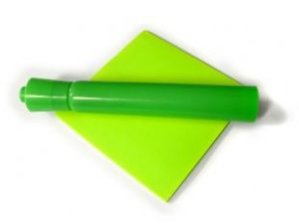The key to productivity is your backlog, not your inbox
The week starts; it’s a clean slate and you’re ready to get some work done.
Where do you go for priorities?
How do you know the must-haves for today, and for the rest of the week?

Launching your e-mail program (Microsoft Outlook, Gmail, etc.), may seem like the logical starting point, but you may be searching in the wrong place.
Think backlog, not inbox.
Think prioritized list of priorities, not the loudest e-mail in all CAPS.
You probably aren’t in a position to completely abandon e-mail. Important business gets communicated via e-mail, appointments are set, contacts are stored all with programs such as Outlook, Gmail, Yahoo Mail. And you’ll still have to access your inbox for some important information throughout your workday, but don’t get too attached to it.
Using your inbox as your direction for the day steers you towards emergencies, not necessary the items that deserve your focused attention.
So what is a backlog?
Wikipedia defines it as: “an accumulation over time of work waiting to be done or orders to be fulfilled”.
In Scrum, a way to deliver value for project teams, this ‘backlog’ can be a product, release or sprint level, depending on your lens.
Put simply, a backlog helps you start the most important work first. It is the backlog where you’ll find the items that will do the most to further your objectives.
If done right, you are continually monitoring, evaluating, shifting priorities in your backlog based on activities of the day, week, quarter.
Electronic tools (such as a neat one from my employer, VersionOne) will keep your backlog organized, neat, tidy, but allow you to feel confident to start low-tech.
Low tech backlog management starter plan:
- Find an open space in your cube, office, room.
- Get some stickies.
- Write a task that needs doing on a sticky note (one per note).
- Prioritize and order the tasks from most important to least important.
- Get started now on the most important task.
- Repeat every day.
Another tip: Check e-mail periodically throughout the day. When you are not using it, shut the program down. Check e-mail once in the morning, once at lunch, and once before you leave the office.
Until next time,
Dan Naden

